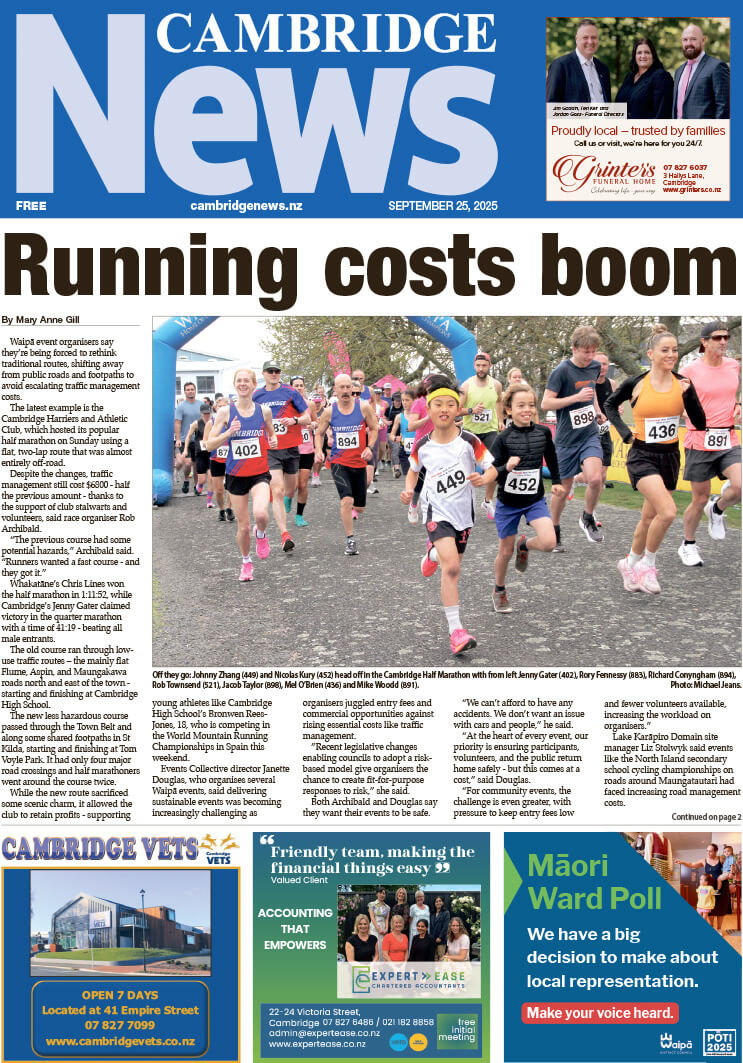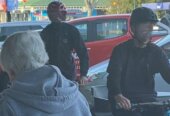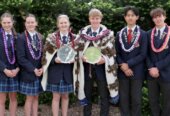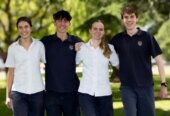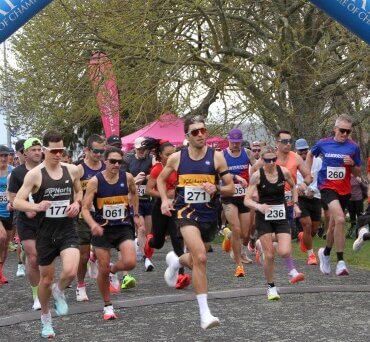
The Cambridge Half Marathon gets underway.
Waipā event organisers say they’re being forced to rethink traditional routes, shifting away from public roads and footpaths to avoid escalating traffic management costs.

Off they go: Johnny Zhang (449) and Nicolas Kury (452) head off in the Cambridge Half Marathon with from left Jenny Gater (402), Rory Fennessy (883), Richard Conyngham (894), Rob Townsend (521), Jacob Taylor (898), Mel O’Brien (436) and Mike Woodd (891). Photo: Michael Jeans.
The latest example is the Cambridge Harriers and Athletic Club, which hosted its popular half marathon on Sunday using a flat, two-lap route that was almost entirely off-road.
Despite the changes, traffic management still cost $6800 – half the previous amount – thanks to the support of club stalwarts and volunteers, said race organiser Rob Archibald.
“The previous course had some potential hazards,” Archibald said. “Runners wanted a fast course – and they got it.”
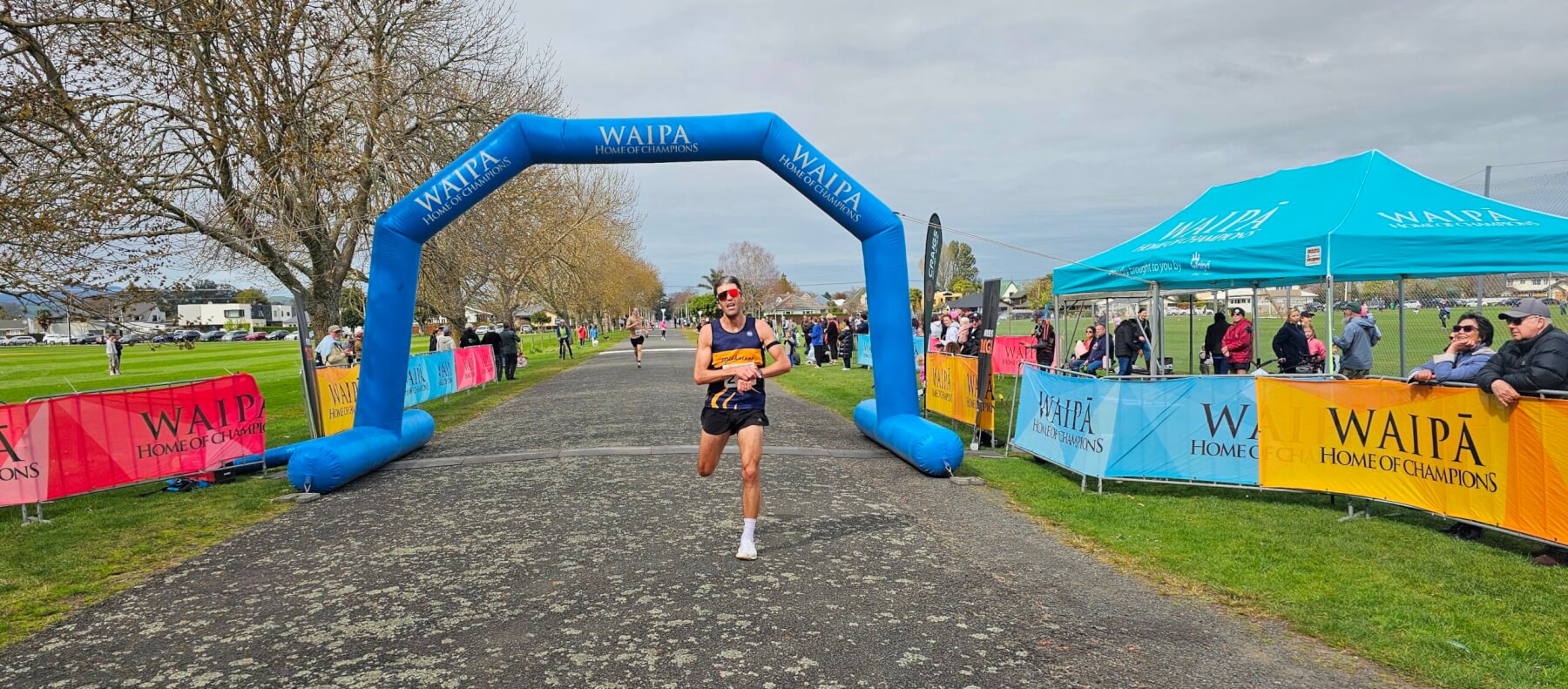
Chris Lines of Whakatane crosses the finish line. Photo: Mary Anne Gill

Jenny Gater gets her medal after winning the Cambridge quarter marathon. Photo: Mary Anne Gill
Whakatāne’s Chris Lines won the half marathon in 1:11:52, while Cambridge’s Jenny Gater claimed victory in the quarter marathon with a time of 41:19 – beating all male entrants.
The old course ran through low-use traffic routes – the mainly flat Flume, Aspin, and Maungakawa roads north and east of the town – starting and finishing at Cambridge High School.
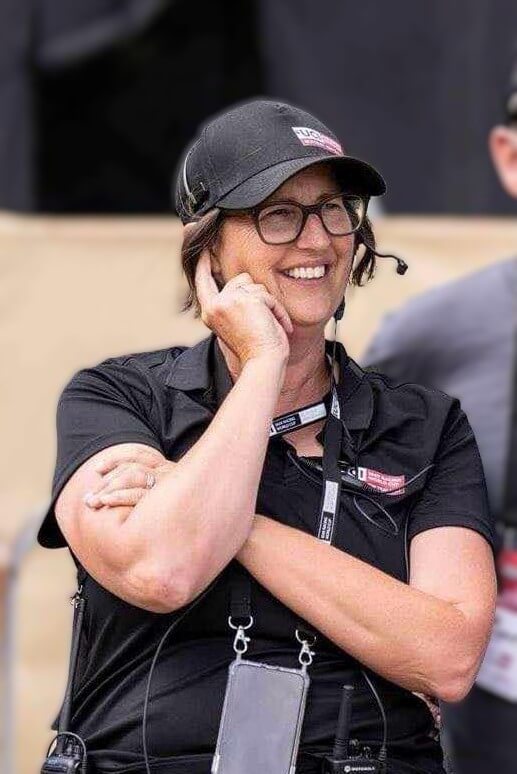
Janette Douglas
The new less hazardous course passed through the Town Belt and along some shared footpaths in St Kilda, starting and finishing at Tom Voyle Park. It had only four major road crossings and half marathoners went around the course twice.
While the new route sacrificed some scenic charm, it allowed the club to retain profits – supporting young athletes like Cambridge High School’s Bronwen Rees-Jones, 18, who is competing in the World Mountain Running Championships in Spain this weekend.
Events Collective director Janette Douglas, who organises several Waipā events, said delivering sustainable events was becoming increasingly challenging as organisers juggled entry fees and commercial opportunities against rising essential costs like traffic management.
”Recent legislative changes enabling councils to adopt a risk-based model give organisers the chance to create fit-for-purpose responses to risk,” she said.
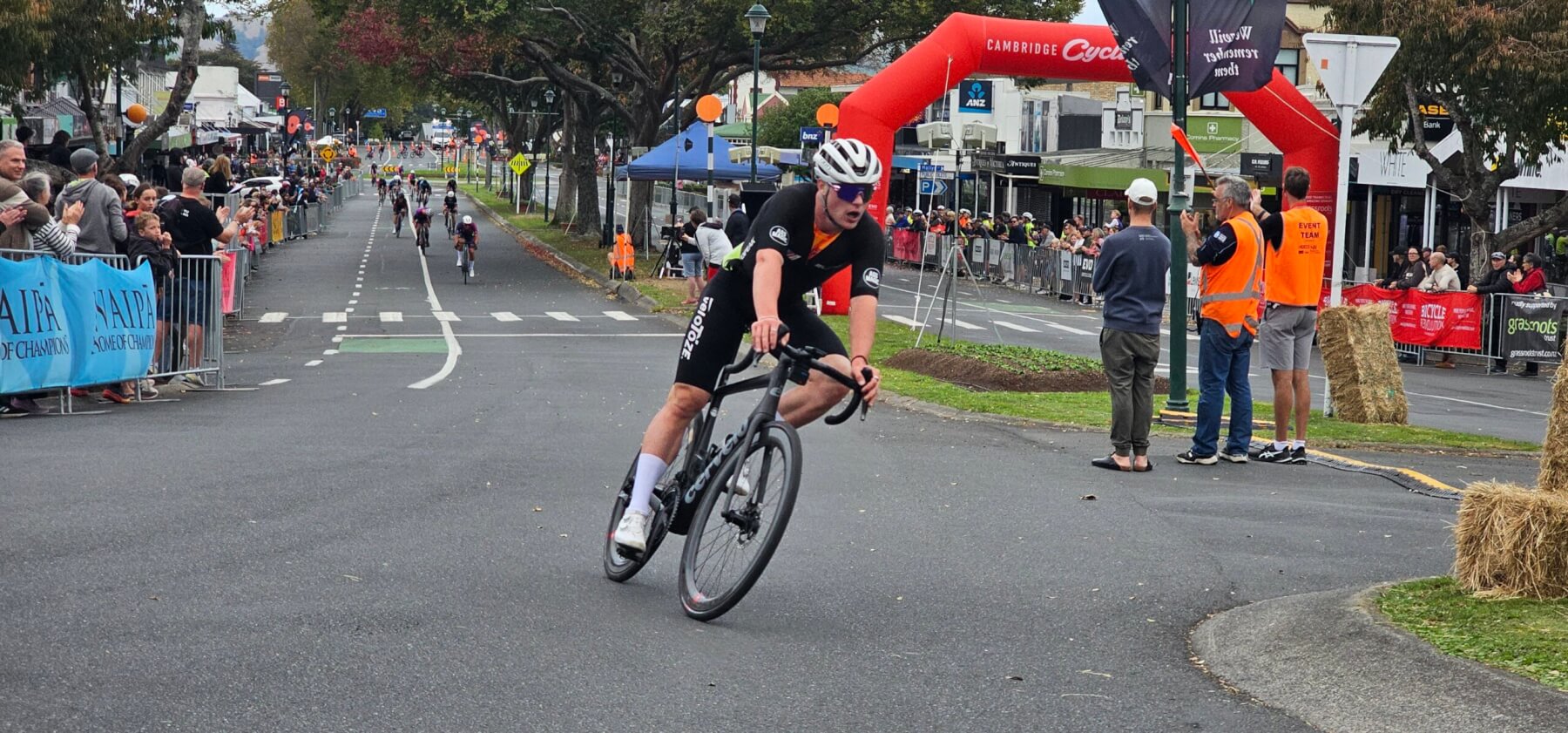
Traffic management costs for the Cambridge Cycling Festival, held earlier this year, come in at around about $15,000. Photo: Mary Anne Gill
Both Archibald and Douglas say they want their events to be safe.
“We can’t afford to have any accidents. We don’t want an issue with cars and people,” he said.
“At the heart of every event, our priority is ensuring participants, volunteers, and the public return home safely – but this comes at a cost,” said Douglas.
“For community events, the challenge is even greater, with pressure to keep entry fees low and fewer volunteers available, increasing the workload on organisers.”
Lake Karāpiro Domain site manager Liz Stolwyk said events like the North Island secondary school cycling championships on roads around Maungatautari had faced increasing road management costs.
She no longer uses traffic management plans for events within the domain, instead adopting the risk-based model with fewer road cones and bureaucracy.
Cambridge Chamber of Commerce chief executive Kelly Bouzaid said traffic management fees for the Illuminate event which the chamber ran two years ago were “insane”.
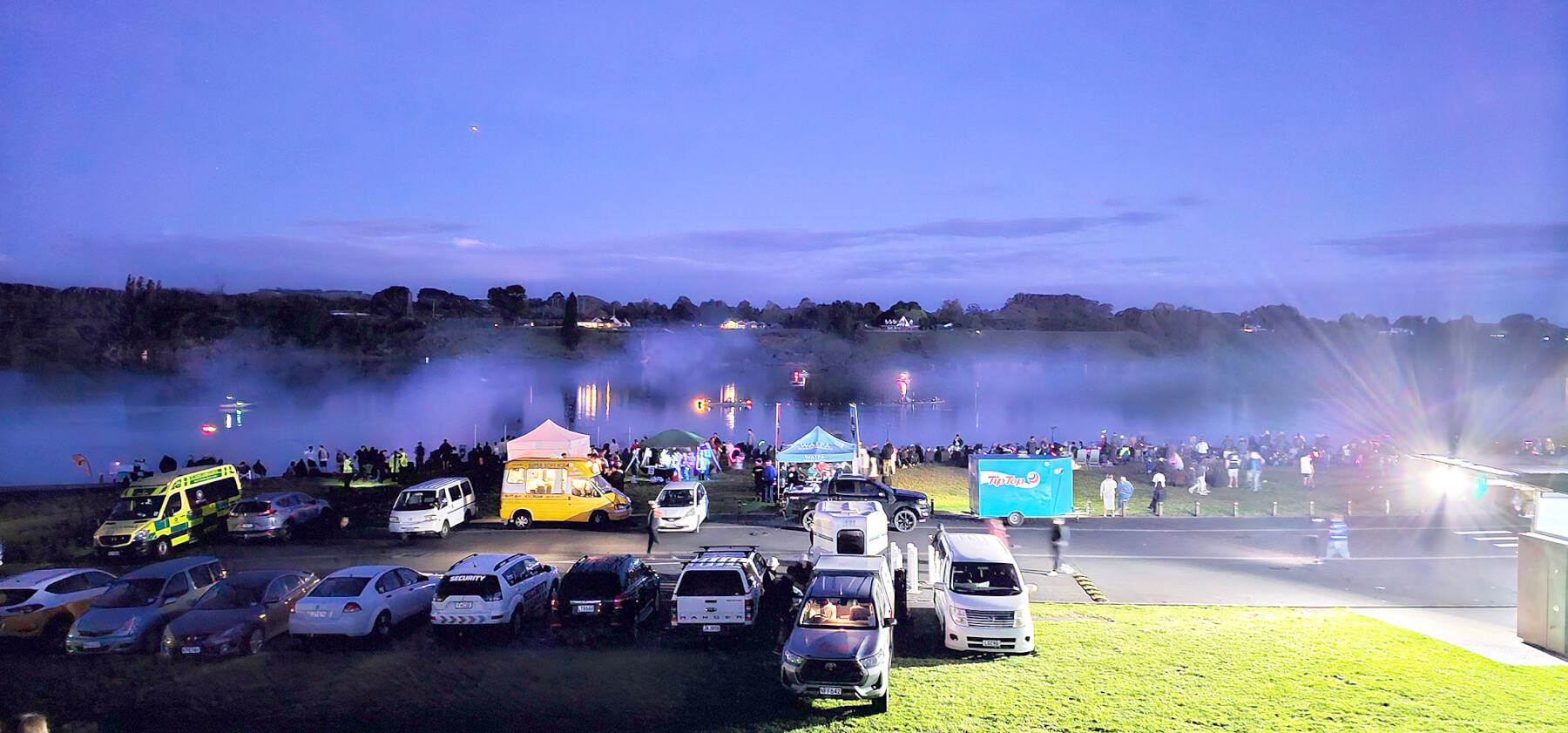
The laser show at Illuminate gets underway on the water at Lake Karāpiro.
“There has to be a better way. People have to reskin it.”
Chamber members are often able to help out particularly if they had facilities off road clubs could use to avoid traffic management costs.
“Events can be reimagined – without just going round in circles,” she said, hinting at creative alternatives to traditional formats.
Essential to saving money on traffic management are volunteers and partnerships, said Archibald.
The club used 50 volunteers in a number of roles including marshalling, car parking and handing out medals to the 630 entrants.
“We have a large number of (club) stalwarts and they were shoulder tapped by one of the life members and he’s got them out on the course helping.
“We’ve encouraged other sporting bodies to work with us so they can benefit.”
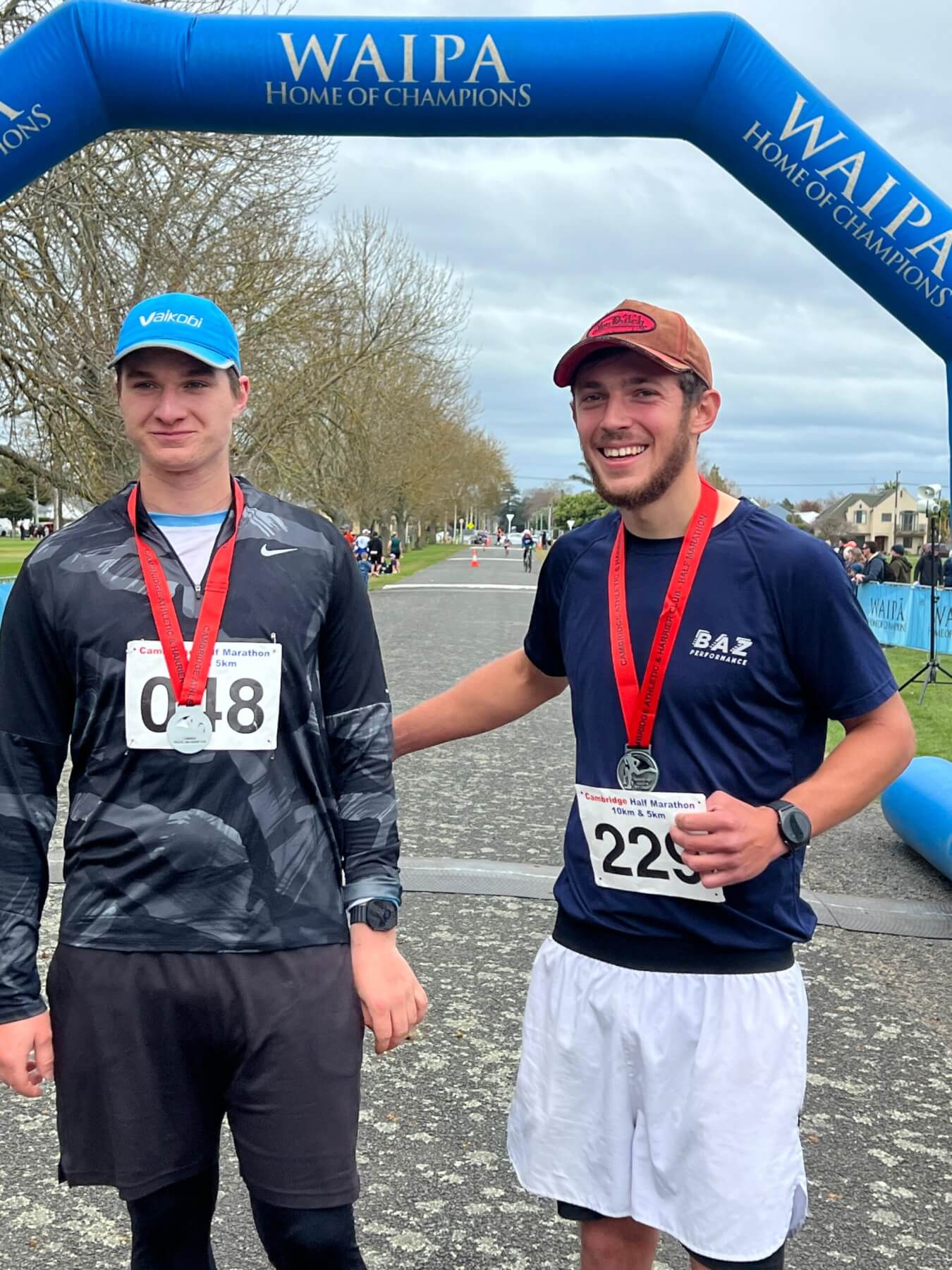
Cambridge Half Marathon drew international competitiors, from left Jáchym Jandl from Czech Republic, Clement Marszelak from France.
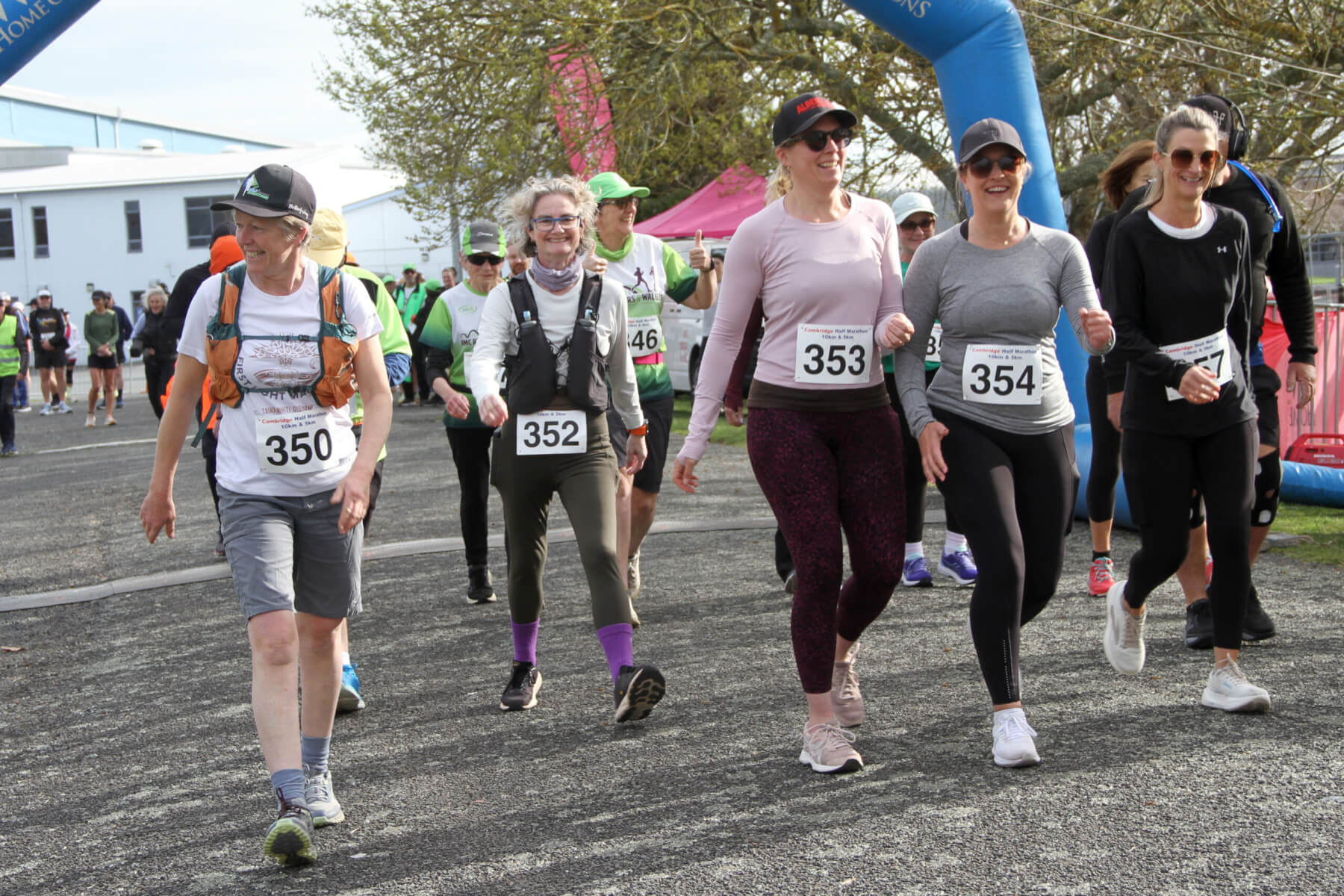
From left Sally Lobb, Liz Bennett, Fran Bailey, Jules O’Carroll and Shantell Carter head out on the half marathon walk. Photo: Michael Jeans
Tom Voyle Park Sports Club needs a new roof for its pavilion and to upgrade facilities so it used the half marathon to raise funds as did St Peter’s Catholic School Parent Teacher Association.
Cambridge Harrier and Athletics Club applied for $1000 from the Waipā District Council promotions fund but The News understands it was among several who missed out when the money was allocated on Monday.
Despite the challenges, Cambridge Harriers and Athletic Club – which celebrated its 75th anniversary earlier this year – continues to uphold a proud tradition – bringing people together, supporting youth, and adapting with resilience.
As costs rise, so too does its commitment to keeping events like the half marathon alive.
See: Bronwen has a mountain to climb

Cambridge Half Marathon medals. Photo: Mary Anne Gill
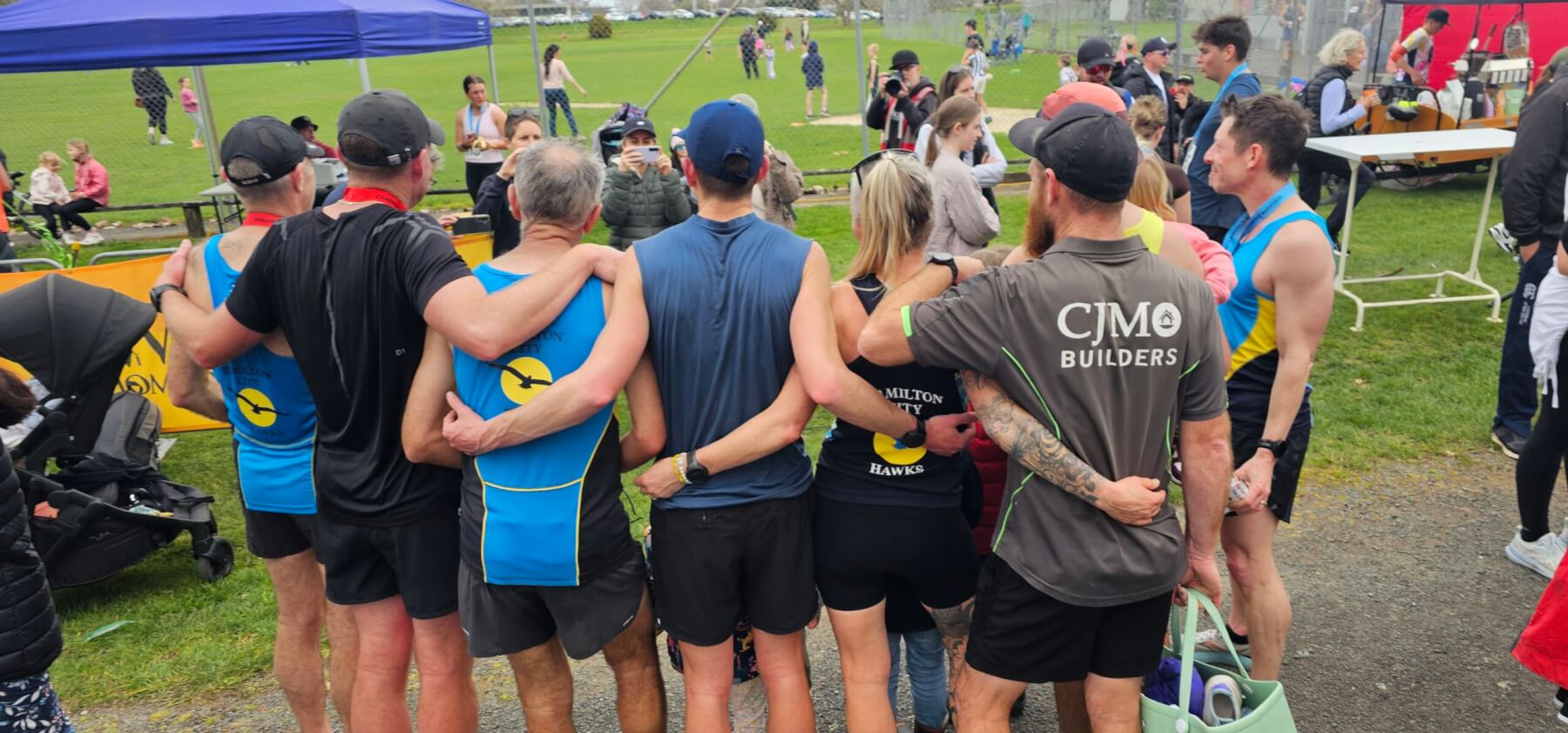
Smile please: Hamilton City Hawks runners at the end of the Cambridge Half Marathon. Photo: Mary Anne Gill
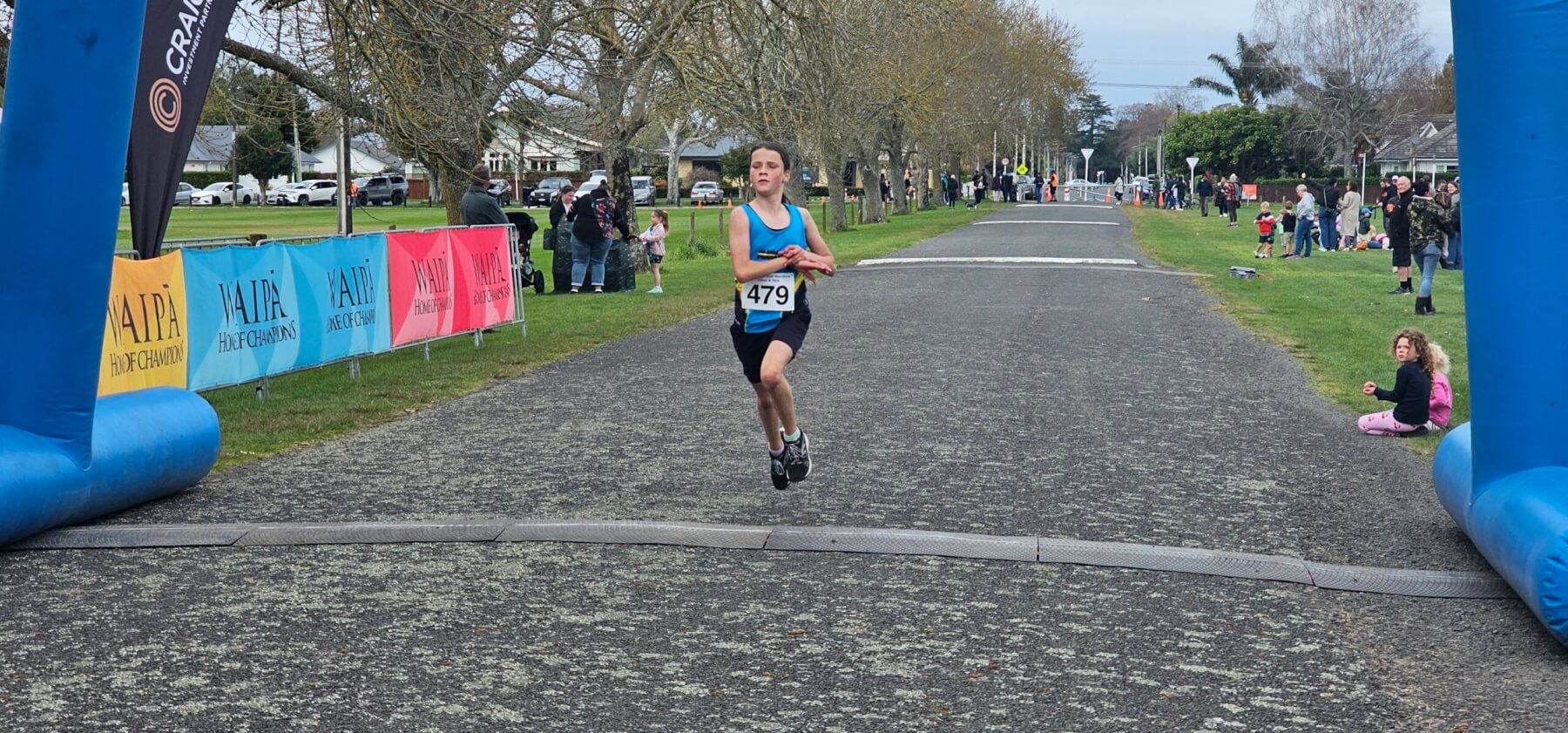
Jasmine Rasmussen Shawyer was second in the 10.5km women’s run at the Cambridge Half Marathon. Photo: Mary Anne Gill
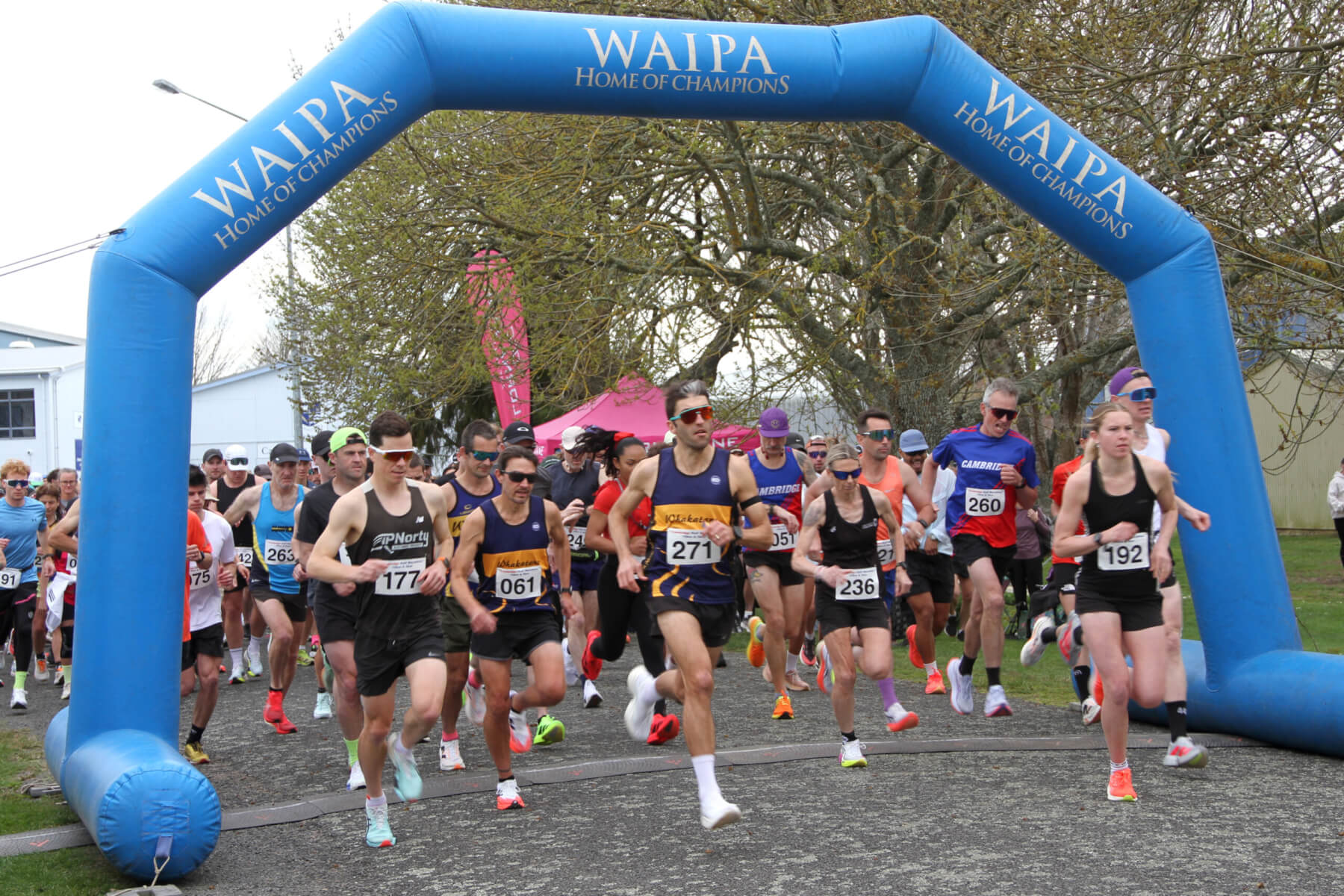
The Cambridge Half Marathon gets underway. From left David Martin, Joel Stansloski, winner Chris Lines, Rachel O’Brien, Bill Moore and Jess Jennings. Photo: Michael Jeans



